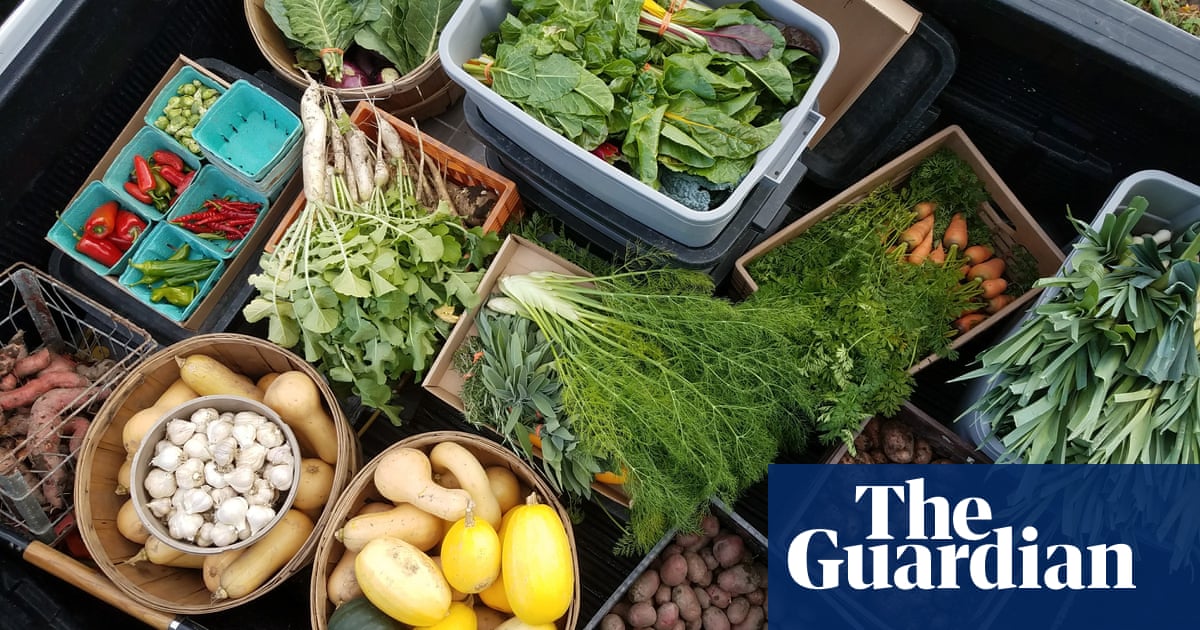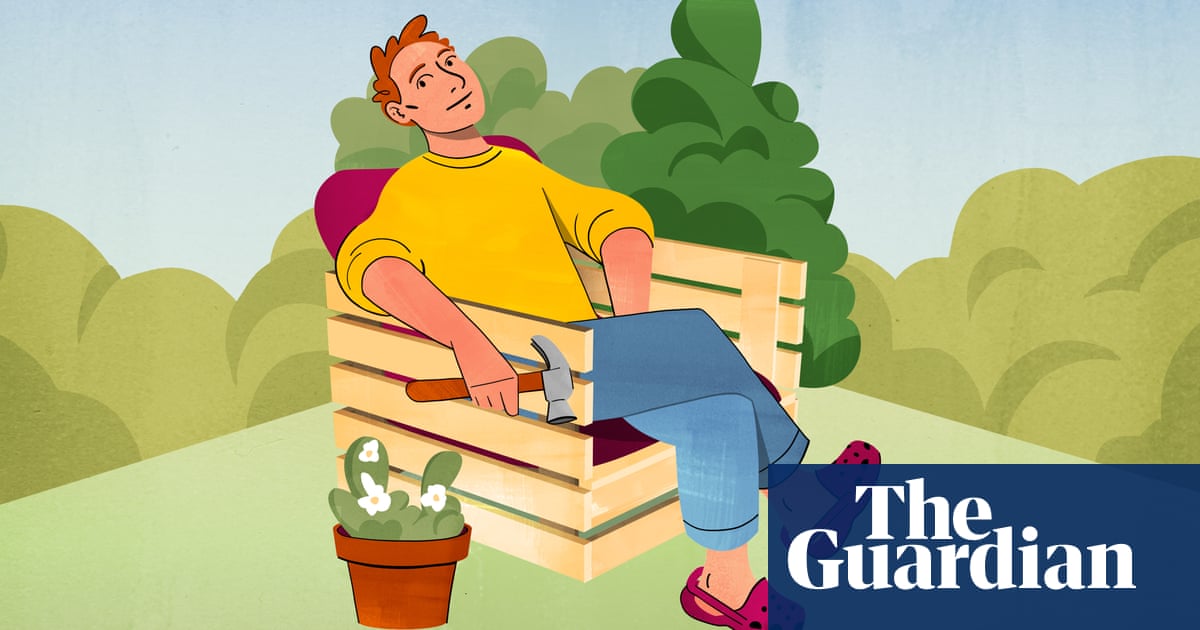
Every Wednesday during the growing season, Emilyn Sosa picks up a box of produce from a community center in Brooklyn crammed with the week’s harvest. This might include carrots, beets or sometimes kohlrabi, which she cooks up into soups and salads for her family of five.
The price? It’s whatever Sosa judges to be fair. For a weekly box, the 33-year-old pays about $15 (£12). If she were to buy a similar amount of fruit and vegetables at a standard supermarket – where the prices are of course non-negotiable – the cost might be upward of $60 (£50) per week.
Sosa is a member of a community-supported agriculture (CSA) program called Rock Steady, a 12-acre farm in upstate New York. Customers like her make regular payments to receive bundles of freshly harvested fruit and vegetables. But the prices are determined on a sliding scale of income, allowing customers to choose a payment level that is affordable to them. Other market farms across the US are opting for sliding-scale models in an effort to reach a wider demographic of customers and to help farmers stay afloat.
Sosa has no idea what her fellow members are electing to pay. “And that makes such a difference, to not feel like a charity,” she said.
At Rock Steady, the annual price for members, based on their income, is split into high ($1,155), middle ($825) and lower ($660) brackets. In the lower bracket, that comes out to about $30 (£25) a week, for about eight or nine items. The farm also accepts Snap and EBT cards, the federal nutrition program formerly known as food stamps. Most people are in the middle bracket, while higher-income contributors subsidize those on the lower end of the scale.
When joining the program, customers are asked to take an inventory of their situation, both material and social, to determine how much to pay: do you own a house? Do you have a college education? Do you have savings? Those who do are asked to pay a higher share. Those who have significant debt or are renting or are senior citizens are invited to pay a lower share.
A 2017 study of nearly 500 CSA farm managers across the US found that 14% offered subsidized programs. A more recent study identified more than 100 subsidized CSA programs.
Although Rock Steady introduced a subsidized model in 2015, the Covid pandemic was a turning point, says co-founder Maggie Cheney, who uses they/them pronouns. It was at the beginning of the pandemic, when lines for food pantries and grocery stores snaked around New York City blocks, that higher-income members of the CSA started giving more so that those with less means could afford it too, Cheney said. Now the farm’s CSA is so oversubscribed it has a 200-strong waiting list.
“It’s not a donation of our produce, which is not a sustainable route for farmers, who often can’t even pay themselves,” says Cheney.
“As a queer-owned and -operated farm, social justice runs deep in our mission,” they add. “What motivates us is feeding our community, which consists of many low-income and marginalized people.”
Also in New York state, but on the other side of the Hudson River, a CSA farm called the Phillies Bridge Project offers a national wage calculator to guide members to help them decide where they sit on the sliding scale. Some shares are discounted by 70% for those who are eligible for Snap, which comes out to about $6 a week for a small allowance of seasonal produce.
Assistant farm manager Rhyston Mays, who uses they/them pronouns, believes it’s important to pay something, even a marginal amount. “Part of our honor system is building a framework for people to be able to self-select and have agency as a person who participates in the food system,” they say.
A study of 41 CSAs in California found that even when paying full price, low-income subscribers were often more committed to the program than those with higher incomes. Those with annual earnings under $50,000 (£41,371) were more motivated to share financial risk, volunteer and participate in farm events than those with higher incomes.
Subsidizing produce is still only one solution to the problem of reducing food inequalities, says Matt Kauffman, the founder of 5 Loaves, an urban farm in Buffalo that offers sliding-scale shares. “Just making broccoli available doesn’t mean people are going to eat broccoli,” he says. “There are cultural disconnects at play.”
This is one of the drawbacks that Marilyn Sitaker, an epidemiologist and public health researcher, has identified with sliding-scale models. “Food access goes far beyond affordability,” she says. Produce needs to be abundant, easy to pick up, culturally appropriate and suited to the customer’s tastes. “The CSA model requires willingness to make a commitment. It’s not for everyone,” she adds.
For this reason, 5 Loaves runs education programs, such as cooking classes and agricultural internships, to give communities the tools to enjoy fresh produce. In Buffalo, a city with a diverse refugee and immigrant community, “maybe people want these specific eggplants from Thailand or crops from east Africa,” Kaufmann says. As the Buffalo farm grows, it is starting to sow seeds from its members’ cultures.
Communities can be knitted together by “investing in the risk or reward of local agriculture”, says Colleen Dixon, a director at Zenger Farm in Portland, Oregon, which offers sliding-scale payments and operates more like a farmers’ market. Instead of dispatching boxes of produce, the fruit and vegetables are laid out on long tables every week from which CSA members are invited to pick a set number of items.
But there are risks associated with CSAs, for example if a farm fails to produce enough crops. “Some weeks we have huge harvests, but others it’s hundreds of pounds of tomatoes and not much else,” Dixon says. When this happens, Zenger Farm gives refunds to lower-income subscribers so they can source their staple foods elsewhere.
Extreme weather can also disrupt crops. “If we have a snowstorm, drought or fires, it really shortens the growing season, which impacts food production,” Dixon says. “I expect we’ll see more of these challenges with climate change.”
These CSA programs are far ahead of federal and state governments, Sitaker says. A national food strategy to fund programs that will remove barriers to local food access is only launching next year.
But Sitaker believes sliding-scale models could have “a small but mighty” role to play in addressing food inequities with greater government investment.












